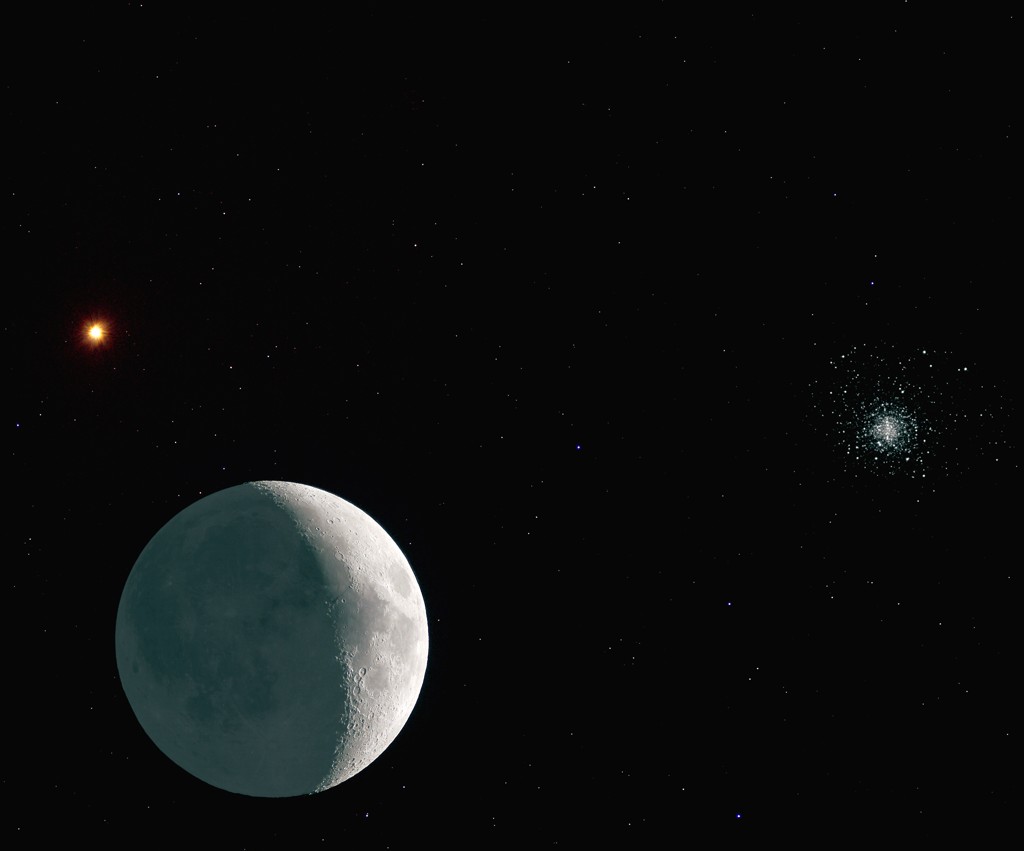
image by Dennis Simmons, Brisbane, Australia
What started out as a simple project to record Antares sailing by our Moon evolved into a complex web of photo-trickery! On 28th Sept 2006 Antares passed within ½ degree of the Moon as seen from the light polluted skies of suburban Brisbane. I managed to capture an image of the crescent Moon with Antares using my 4" refractor and a Pentax DSLR. It looked okay, but not quite as expected. The brightness of the Moon washed out everything except Antares, which appeared as a small pinprick of light. The next evening, 29th Sept, I managed to grab 10 x 30 sec images of the region around Antares where the Moon had been so dominant the previous night. How could I possibly take a photo that recorded all these wonderful objects with such a horrendously large brightness variation? I then recalled capturing M4 with my ST7ccd camera (May 2003) and a full Moon mosaic with my Meade LPI (March 2005). After a little playing around and alignment, I finally created this composite image. The image inventory is as follows: Crescent Moon (28th Sept), Antares Region (29th Sept), M4 (May 2003), Full Moon (March 2005).
Dennis Simmons
Related Links:
Another lunar composite
Now you can support LPOD when you buy any book from Amazon thru LPOD! So buy a book!
COMMENTS?
Click on this icon File:PostIcon.jpg at the upper right to post a comment.



